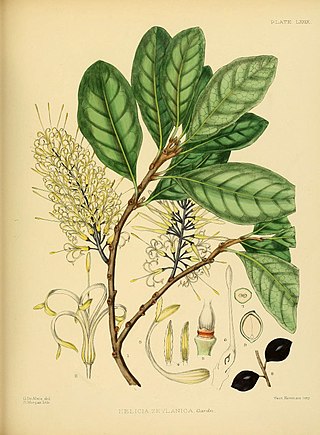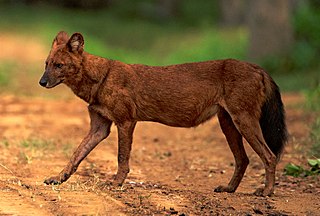
The International Union for Conservation of Nature (IUCN) Red List of Threatened Species, also known as the IUCN Red List or Red Data Book, founded in 1964, is an inventory of the global conservation status and extinction risk of biological species. A series of Regional Red Lists, which assess the risk of extinction to species within a political management unit, are also produced by countries and organizations.

Sardine and pilchard are common names for various species of small, oily forage fish in the herring suborder Clupeoidei. The term 'sardine' was first used in English during the early 15th century; a somewhat dubious etymology says it comes from the Italian island of Sardinia, around which sardines were once supposedly abundant.

An IUCN Red List Critically Endangered species is one that has been categorized by the International Union for Conservation of Nature as facing an extremely high risk of extinction in the wild. As of December 2023, of the 157,190 species currently on the IUCN Red List, 9,760 of those are listed as Critically Endangered, with 1,302 being possibly extinct and 67 possibly extinct in the wild.

Kleinia scottii is a species of flowering plant in the family Asteraceae. It is found only on the island of Socotra in Yemen. Its natural habitat is subtropical or tropical dry forests.
Andrachne schweinfurthii is a species of plant in the family Phyllanthaceae. It is a subshrub native to Somalia and to the island of Socotra, which is part of Yemen. Its natural habitats are tropical dry forests and woodlands and rocky areas.
Graderia fruticosa is a species of plant in the family Orobanchaceae. It is a shrub endemic to the island of Socotra in Yemen. It grows in shrubland on rocky slopes and ridges in the high Hajhir Mountains of central Socotra from 700 to 1,300 metres elevation.

Helicia is a genus of 110 species of trees and shrubs, constituting part of the plant family Proteaceae. They grow naturally in rainforests throughout tropical South and Southeast Asia, including India, Sri Lanka, Indochina, Peninsular Malaysia to New Guinea and as far south as New South Wales.
Hopea shingkeng was a species of plant in the family Dipterocarpaceae. It was endemic to the eastern Himalaya region of India.
Limonium paulayanum is a species of plant in the family Plumbaginaceae. It is a subshrub or shrub endemic to Yemen's Socotra Archipelago, where it is native to the islands of Socotra, Samhah, and Abd al Kuri. Its grows in coastal dwarf shrubland and on inland cliffs and rocky areas, from sea level to 550 metres elevation.
Limonium sokotranum is a species of plant in the family Plumbaginaceae. It is a subshrub or shrub endemic to Yemen's Socotra Archipelago, where it is native to the islands of Socotra, Samhah, and Abd al Kuri. Its grows in coastal dwarf shrubland and inland cliffs and rocky areas from sea-level to 550 metres elevation.
Priva socotrana is a species of plant in the family Verbenaceae. It is a subshrub endemic to the islands of Socotra and Samhah in Yemen's Socotra Archipelago. It is common and widespread in dry shrublands and woodlands on limestone escarpments and plateaus from 50 to 950 metres elevation.
Withania riebeckii is a species of plant in the family Solanaceae. It is endemic to the islands of Socotra and Samhah in Yemen's Socotra Archipelago. It is widespread in succulent shrubland and drought deciduous woodland from sea-level to 800 metres elevation.
Xylocalyx aculeolatus is a species of plant in the family Orobanchaceae. It is a subshrub endemic to the island of Socotra in Yemen. It grows in low shrubland on limestone plateaus from 200 to 600 metres elevation.
Xylocalyx asper is a species of plant in the family Orobanchaceae. It is a subshrub endemic to the islands of Socotra and Samhah in Yemen's Socotra Archipelago. It grows on coastal plains and dry foothills, and less commonly on limestone plateaus, from sea level to 600 metres elevation. It grows at lower elevations than X. aculeolatus.

Kickxia is a genus of plants in the plantain family (Plantaginaceae). It includes several species known commonly as cancerworts or fluellins. Species are mostly native to Europe, Central Asia, and Africa, with two, K. elatine and K. spuria, well-established as invasive elsewhere.

An endangered species is a species that is very likely to become extinct in the near future, either worldwide or in a particular political jurisdiction. Endangered species may be at risk due to factors such as habitat loss, poaching, invasive species, and climate change. The International Union for Conservation of Nature (IUCN) Red List lists the global conservation status of many species, and various other agencies assess the status of species within particular areas. Many nations have laws that protect conservation-reliant species which, for example, forbid hunting, restrict land development, or create protected areas. Some endangered species are the target of extensive conservation efforts such as captive breeding and habitat restoration.

Carnarvonia araliifolia, commonly known as the red oak, red silky oak, Caledonian oak or elephant's foot, is the sole species in the genus Carnarvonia, a member of the Proteaceae family. It is endemic to the rainforests of northeastern Queensland, Australia.

Tabernaemontana pandacaqui, known as windmill bush and banana bush, is a species of plant in the dogbane family Apocynaceae.
Nanorrhinum webbianum is a species of flowering plant in the family Plantaginaceae, endemic to Cape Verde. The local name of the plant is agrião-de-rocha ("rock-cress").









